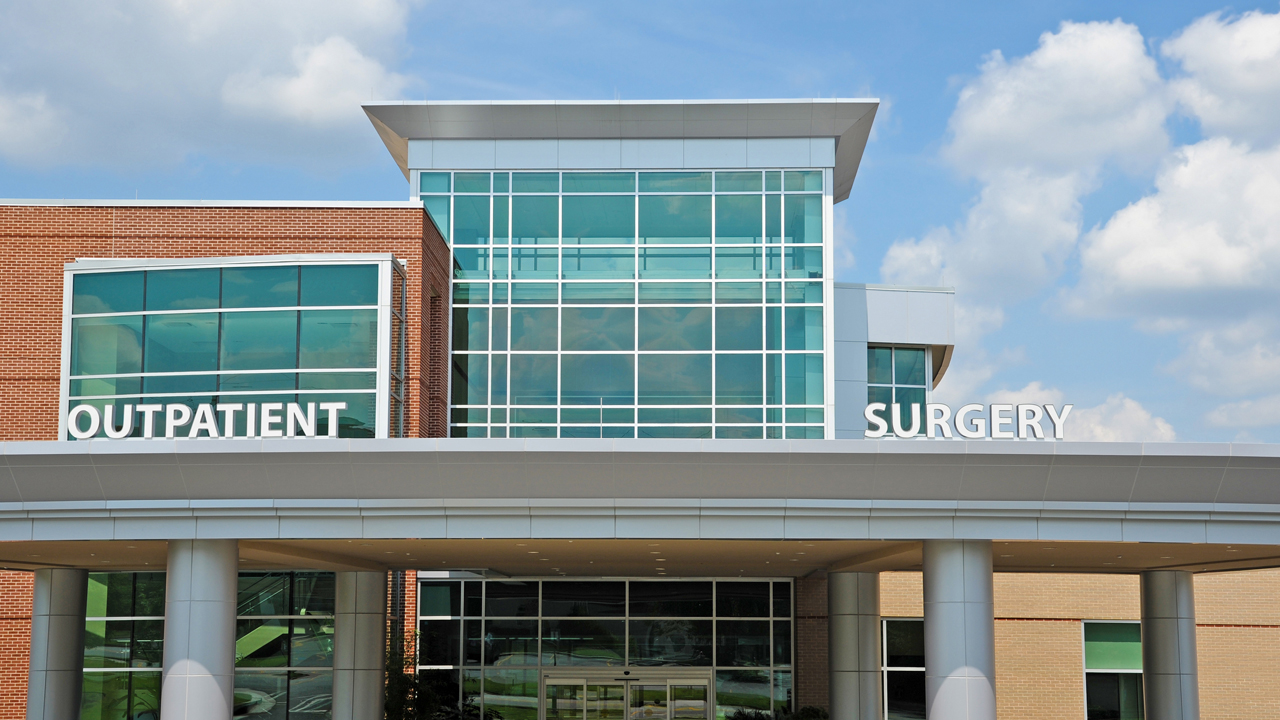
Ask the Expert: Where Should Non-Acute Healthcare Providers Focus Their Technology Investments Right Now – and Why?
Last week, Dave Stewart laid out some of the challenges that non-acute healthcare providers are facing right now, contrasting them to the challenges faced by acute care providers. And though technology can enable improved patient care and safety, the means by which it is applied to achieve such goals may vary as Dave emphasizes in this second part of our “Ask the Expert” discussion…
Your Edge Blog Team: You mentioned earlier in our conversation that non-acute healthcare providers need to think about technology holistically? What do you mean by that?
Dave: Well, I can tell you from personal experience, that many doctors who are investing in mobile technologies are doing so to create an electronic health record (EHR) system. For example, instead of giving a patient a stack of papers to fill out when they check in for their appointment, doctors are opting to give them tablets upon which they can complete and sign the necessary documents. Allowing patients to directly enter their medical histories or sign privacy forms digitally eliminates the middleman (or woman). Data entry errors are reduced. Front desk/back office staff can now use the time they used to spend transferring data to computer systems or filing paper forms on more strategic administrative tasks, such as billing and collections. And nurses and doctors can retrieve detailed patient data as soon as they walk into the room, if not before, and have an understanding of the care that may be needed – even if this is the patient’s first visit.
But, if you’re going to take this route, you have to be careful. Despite the many benefits of this tablet-centric clinical mobility application, it can actually create more problems if not executed correctly.
Your Edge Blog Team: What do you mean? What types of mistakes do you see in the non-acute space around mobility?
Dave: Many physicians, not knowing any better, buy a bunch of consumer-grade tablets because that’s what they are familiar with personally. And, on paper, the price may seem right for their tight budgets. They may even be able to find a software solution or app that seems to be suited for healthcare use. What they don’t realize is that the consumer-grade tablet is likely lacking the security and safety features needed in healthcare settings where patient safety and privacy are priorities. Or that an iOS device isn’t compatible with their other back-office Windows® systems or Android™ smartphones or the printer they use to create labels or patient wristbands. You get the point.
And, let’s assume they do opt for a rugged tablet that’s been purpose-built for healthcare use – a tablet that boasts TPM and encryption, can be properly disinfected, etc. – are they going to use the tablet only for that single patient check-in process? Are they still going to require clinicians to go to a stationary computer to input patient care notes? Or will nurses also be given a tablet or clinical smartphone on which to retrieve and record data at the patient’s bedside? And will the tablet or smartphone need a barcode scanner built in for patient identification (wristband scans) or pharmaceutical control (bag/bottle/vial scans)?
Your Edge Blog Team: In other words, non-acute providers need to think about automated identification and data capture (AIDC) tools in the same way as acute providers?
Dave: Exactly. In order for ambulatory surgery centers, long-term care providers and post-acute providers to fully benefit from any technology investment, they need to think about all the ways in which technology can improve workflow efficiency and patient safety within their four walls.
Consider materials management, for example. Consumables make up as much as 30 percent of the cost of delivering a service in ambulatory surgery centers. A small improvement in the management of these items can return significant savings. I can tell you (as can our customers) that barcoding, scanning and RFID technology solutions can lead to significant improvements.
Shifting gears back to patient safety: positive patient identification (PPID) is critical to protecting patients and even improving care quality in many clinical workflows, starting with admissions. But doctors and nurses are not going to ask the patient to present a driver’s license or ID card before every interaction. That is why wristbands were adopted so quickly as the standard for PPID. Clinicians and administrators can quickly look at the wristband to verify a patient’s identity through each workflow, like they do in hospitals. But, just as in acute care settings, barcoded wristbands specifically can do more than just confirm a clinician is talking to the right person about the right thing. They can help to facilitate safer medication administration, specimen collection and medical device administration.
Assuming the care provider has a clinical smartphone or purpose-built healthcare tablet in hand, he or she could scan the wristband and then the IV bag, medicine bottle, blood vial or medical device to confirm that the administration or collection instructions match up with what was ordered for the person in front of them. The patient’s up-to-the-minute record is right there on the smartphone or tablet screen, and both ID and care instructions are verified. This is especially useful in long-term care environments when a patient’s medicines may change from time to time. The mobile devices enable nursing staff to confirm that they are following the doctor’s most current orders. It improves confidence in care.
Your Edge Blog Team: Going back to a point you made earlier, there are often greater cost sensitivities in non-acute settings. So, is it really reasonable to think that non-acute providers could afford to rollout new purpose-built mobile devices, barcoded wristbands (which also require special printers), RFID asset tags and more at the same time?
Dave: That’s a great question, and I want to clarify. When I suggested that non-acute providers consider broad-scale technology utilization, I should have stressed that the technology does not have to be rolled out all at once. It can be implemented in phases over the course of one, three or five years. Even acute care facilities – large hospitals with lots of funding – take an incremental approach to technology deployment.
My point was that, if you aren’t thinking about what’s next – the next process that you want to streamline, the next workflow that you want to mobilize, the next data system that needs updating – then you may invest in a mobility solution that solves one problem right now, but is incompatible with the other technologies necessary to solve the next problem or make the next improvement. A technology solution provider that specializes in healthcare will ensure you’re thinking about these things. They’ll let you know whether or not the smartphone, tablet or even wristband option you’re leaning towards today is scalable enough to support your other anticipated upgrades for the next 3-5 years – or if it will become obsolete and need to be replaced in a year, which isn’t ideal when resources are already tight.
Your Edge Blog Team: Zebra has specialized in healthcare technology for many years now, though some would say that the company’s focus has been more in the acute care environment. Why are you so focused on advocating for broader technology utilization among non-acute care providers?
Dave: I’ve always felt that Zebra is in the business of saving lives. There is one study that suggests that medical errors are now the third leading cause of death in the U.S. So, can you imagine all those errors that don’t result in a death, or those errors that aren’t even documented? No clinician goes into his or her job intentionally meaning to make a medical error, but it happens.
If we, as a company, can provide a solution that allows a clinician – in any environment – to maintain compliance, eliminate the risk of error or have the tools to make a better decision about a patient’s care, that makes everything we do worthwhile. I know how eager ambulatory surgery centers, nursing homes and physicians are to do all of those things. They made it very clear, especially during our conversations at ASCA, that quality patient care always comes first. However, in non-acute environments, improvements in patient care often start with improvements in administration workflows, such as:
- Making sure they have the right medicine, supplies and equipment on hand
- Confirming that a patient’s recommended care plan is covered by his or her insurance
- Ensuring that patient care actions are being updated in real time, and without errors, in the record used for insurance billing to prevent undue stress on the patient or future care delays
- Maintaining a completely accurate, up-to-the-minute healthcare record for seamless patient handoffs between primary and specialty physicians or non-acute and acute care providers
Your Edge Blog Team: It sounds like records management, patient identification and materials management are the three areas where non-acute providers should prioritize their technology investments first then. Is that right?
Dave: Yes, those are the three areas where most non-acute care providers have told us they would benefit most – and most immediately. Although, there are so many different ways that technology can be applied in non-acute/post-acute settings. It would be irresponsible of me to say that every single physician or facility needs to focus on these things first. We can make a more individualized recommendation once we speak with providers and understand their unique situations.
###
Editor’s Note: Are you a non-acute/post-acute provider who wants to gain new efficiencies, reduce operating costs or improve patient care and safety? Let’s talk. You can also learn more about Zebra’s healthcare solutions on our website, or read about some of the different ways our mobility, printing and wristbands solutions have helped other non-acute (and acute) healthcare providers.

Zebra’s “Your Edge” Blog Team
The “Your Edge” Blog Team is comprised of content curators and editors from Zebra’s Global PR, Thought Leadership and Advocacy team. Our goal is to connect you with the industry experts best-versed on the issues, trends and solutions that impact your business. We will collectively deliver critical news analysis, exclusive insights on the state of your industry, and guidance on how your organization can leverage a number of different proven technology platforms and strategies to capture your edge.




